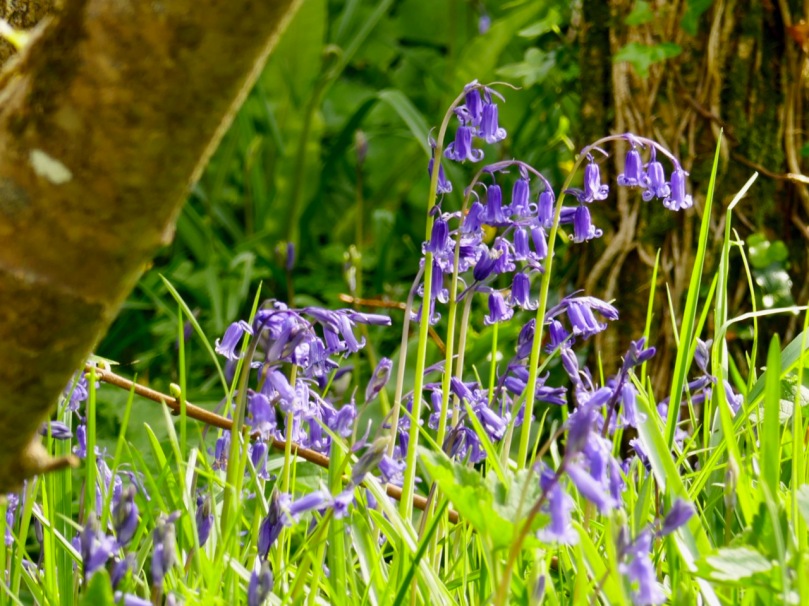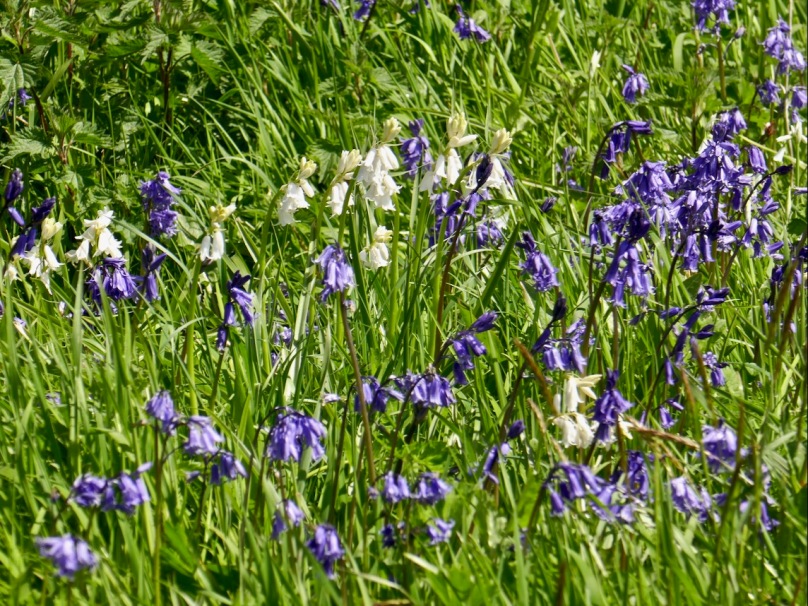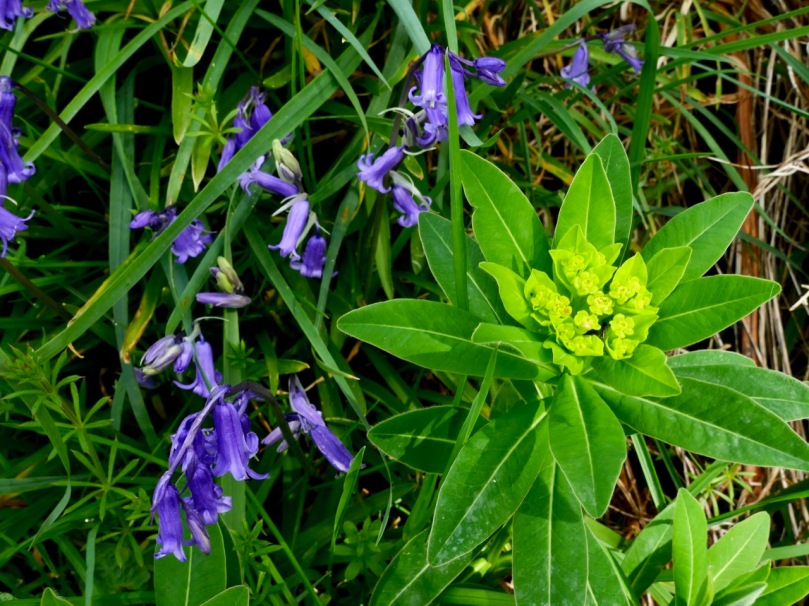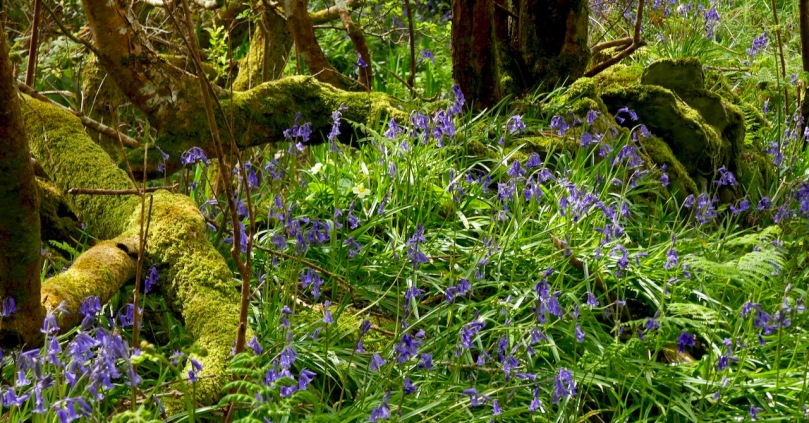What is it about a bluebell wood that re-charges the batteries and lifts the heart? Perhaps it’s that amazing blue carpet that stops us in our tracks: it’s so unlike anything else in our natural world.
Or maybe it’s the fact that it lasts only a little while that makes it special. Like Easter eggs or Christmas carols, we would get tired of them if they were always with us – it’s their brief seasonality that makes us look forward to them (OK, maybe the Christmas carols don’t appeal to everyone in the same way).
Lower: Bluebells and Three-cornered Garlic
Even when it’s bluebell time, as it is right now, it’s not always easy to find a bluebell wood, because we don’t have expansive deciduous forest cover here in West Cork. I love the bluebells that line the boreens in places, growing up the hedgebanks, but it’s not quite the same thing as a woodland carpet.
Bluebells and Celandine growing on the bank on one of my favourite boreens
Let’s start with what a bluebell is – I’m talking here about our native bluebells (Bluebell/Hyacinthoides non-scripta. Or in Irish Coinnle corra, pronounced quinn-la curra). As you probably know, the imported Spanish Bluebell is everywhere now, and to add insult to injury has started to hybridise with our native Bluebell.
A garden near us has a lovely display of blue and pink Bluebells and Three-corned Garlic – unfortunately these are the non-native Spanish Bluebells, or possibly hybrids
Take a look at this excellent video from the Irish Wildlife Trust for a guide to how to distinguish between them.
Fortunately, we still have lots of native bluebells and I was lucky this week to get permission to stroll in my friend, Nick’s, little wood, and also to take a walk with Robert and Gill up the hill behind Long Strand. For more about what we were after, see Robert’s post on the cross today.
Upper: One of the little bridges over the stream. Lower: Bluebells and Irish Spurge
Nick’s little wood is down beside the sea on what was once an old homestead – you pick your way through a heritage orchard to get in there. It felt like an immense privilege to be the only ones there, to wander through the trees and over the tiny bridges.
Upper: one of the way to recognise a native Bluebell is to look at the anthers – they’re white or cream-coloured. Lower: a spontaneous white Bluebell in among the blue ones. It happens
Yesterday, because Robert wanted to see Lady Carbery’s Cross, we walked up Croachna Hill, behind Long Strand, near Rosscarbery. The strand was heaving with swimmers, surfers and loungers, the coffee truck and restaurant were packed and the guy who does the Wild Atlantic Seaweed Baths was out – it all looked so festive and summery.
Primroses and Bluebells
The walk up the hill was awash with wild flowers, besides the ones I’ve illustrated here we saw Common Dog-violet, my first Ragged-Robin of the season, Yellow Pimpernel, Ribwort Plantain, Navelwort, Ground-ivy and Herb-Robert.
I’d never seen that combination of Bluebell and Red-campion before (above). It’s pretty spectacular, and a reminder that colours in nature always harmonise. Together with the yellow of Celandine and Buttercup, and the lovely woodsy smells, it was a sensuous experience.
Upper: Looking back to Long Strand from Croachna Hill. Lower: Bluebells, Celandine, Buttercup, and a lone Red Campion
Where are your favourite bluebell haunts, dear readers?

















So enjoyed the info on the bluebells ! cheers , Shelley from Peterborough New Hampshire
LikeLiked by 1 person
I live in blissful belief that every bluebell is identical 🙂 Certainly they are a welcome addition to our walks and runs here in Jersey, this morning along our coastal paths.
LikeLike
Sorry to burst your bubble, Roy. Bliss is a good state, though.
LikeLiked by 1 person
Bluebells make the heart sing…
LikeLike
That looks a very special little wood and I recommend the seaweed baths! The graveyard at Garryvurcha in Bantry is resplendent with bluebells at the moment – white and pink ones too.
LikeLiked by 1 person
Didn’t have togs with us. Next time!
LikeLike
I’m off out now to check the bluebells growing prolifically here in Ballybane. Pretty sure I am in luck as the scent from them stops me in my tracks.
LikeLike
Love that smell!
LikeLike